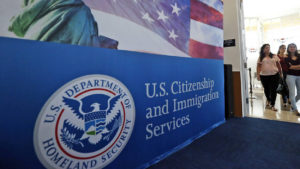 U.S. Citizenship and Immigration Services (USCIS) has issued new policy guidance following the November 10, 2021 settlement agreement discussed in our previous Shumaker Immigration Bulletin blog post. As of November 12, 2021, USCIS has updated its I-9 Handbook and is allowing certain automatic extensions of Employment Authorization Document (EAD) cards for H-4, L-2, and E-1 Dependent, E-2 Dependent, or E-3 Dependent (“E dependent”) visa holders.
U.S. Citizenship and Immigration Services (USCIS) has issued new policy guidance following the November 10, 2021 settlement agreement discussed in our previous Shumaker Immigration Bulletin blog post. As of November 12, 2021, USCIS has updated its I-9 Handbook and is allowing certain automatic extensions of Employment Authorization Document (EAD) cards for H-4, L-2, and E-1 Dependent, E-2 Dependent, or E-3 Dependent (“E dependent”) visa holders.
H-4, L-2, and E Dependent Spouses
The new guidance indicates that USCIS will also soon provide EADs incident to status for L-2 spouses, E-1 Treaty Trader dependent spouses, E-2 Investor dependent spouses, and E-3 specialty occupation professionals from Australia dependent spouses. Meaning, once the policy takes effect, L-2 and E dependent spouses will be authorized to work without applying for an EAD.
H-4, L-2, and E dependent spouses will qualify for an automatic extension of their valid EAD expiration if they:
- Properly file a Form I-765 EAD renewal application prior to expiration; and
- Continue to maintain H-4, L-2, or E dependent status beyond the expiration of the existing EAD as evidenced on Form I-94.
The expired EAD will considered valid until the earliest of the following periods:
- 10 days following expiration;
- Expiration of the H-4 / L-2 / E dependent nonimmigrant’s I-94 record; or
- When USCIS issues a final decision on the EAD extension application.
For I-9 purposes, an H-4, L-2, or E dependent employee may present: an expired EAD indicating category C26, A18, or A17; Form I-797, Notice of Action for Form I-765 with Class requested indicating (c)(26), (a)(18), OR (a)(17) and showing that the I-765 EAD renewal application was filed before the EAD expired; AND an unexpired I-94, showing valid H-4, L-2, or E dependent nonimmigrant status.
L-2 and E-1/E-2/E-3 Dependent Spouses
The new guidance indicates that L-2 and E dependent spouses will not need to file a separate form I-765 EAD application, and will be authorized incident to status and permitted to work once admitted to the U.S. Form I-94 will be modified to indicate the individual is an L-2 spouse so that the I-94 can be used for I-9 purposes. Importantly, however, until the I-94 is modified E and L spouses will still need to rely upon an EAD as evidence of employment authorization.
How to Obtain an Extended I-94
H-4, L-2, and E-3 spouses must have a valid I-94 for the automatic extension of the EAD. Two possible ways this may be obtained are outlined below.
- Spouses may file the H-1B or L-1 extension using premium processing and wait for approval. The H-4 or L-2 spouse then departs the U.S., obtains a new visa, and returns with an extended I-94. Upon his or her return to the U.S., the spouse will file the EAD extension.
- Alternatively, spouses may file the H-4 or L-2 and EAD extensions along with the principal’s H-1B or L-1 extension, and wait for approval. The H-4 or L-2 spouse then departs the U.S., obtains a new visa, and returns with an extended I-94. The spouse will abandon his or her Form I-539- request for extension of status – but Form I-765 will continue to be processed by USCIS.
E dependent spouses are admitted to the U.S. for two years, so these spouses likely already have extended I-94 cards. However, if an E dependent spouse has an expiring I-94, he or she can follow one of the above steps to extend their I-94.
The full USCIS policy alert can be found here.
For additional information, contact Mechelle Zarou at mzarou@shumaker.com; Maria del Carmen Ramos at mramos@shumaker.com; or Ali Latif at alatif@shumaker.com
